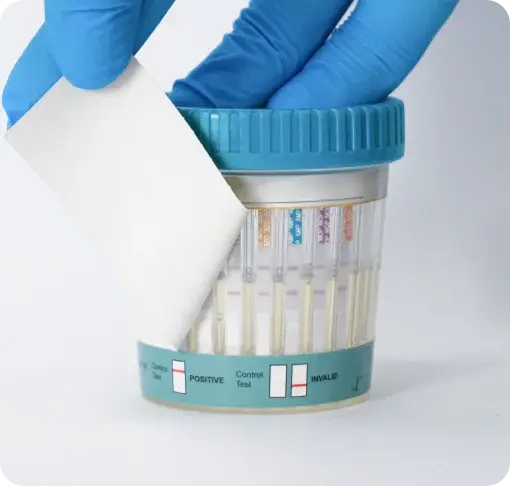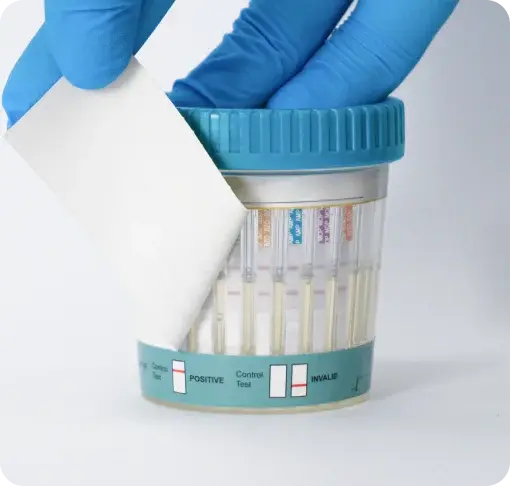Exploring the Realities of Oral Fluid Testing for Today’s Workplaces
As workplace testing continues to evolve, oral fluid testing is quickly gaining popularity as a fast, reliable, and less invasive method. But how does it stack up against traditional urine testing? Based on expert insights from AttoSure's recent webinar, here are the key advantages, limitations, and specialist tips you need to know.
Pros of Oral Fluid Testing
1. Minimised Tampering Risks
Unlike urine testing, oral fluid testing is directly observed. The test is conducted in front of the collector, reducing the risk of adulteration, dilution, or substitution.
2. Fast and Non-Invasive
Collection preparation is quick and doesn’t require special facilities. There's no need for a toilet or private space, making it highly suitable for field testing or locations with limited infrastructure.
3. Accurate Recent Use Detection
Oral fluid tests are ideal for identifying recent drug use (typically within 24-72 hours), making them perfect for post-incident or random testing where recent impairment is a concern.
4. Multiple Device Options
With devices like the Oral Cube, Barrel, and Pen, employers can choose a format that suits their testing environment. The Oral Cube stands out for its triple volume indicators that ensure accurate sampling. The first volume indicator is a sample adequacy indicator on the stem of the swab. When enough oral fluid has been collected a visual colour change is observed. The second volume indicator is a change in the swab texture from “hard” to “soft”. The third volume indicator lies within the cube itself in the form of a viewing window. The operator is able to visually see if enough oral fluid is present within the cube to allow the test strips to run.
5. Built-In Interpretation Guides
Like urine cups, most oral fluid devices include control/test lines, drug abbreviations, and even visual volume indicators—helping testers interpret results confidently.
6. Alcohol Detection Capability
Certain oral fluid kits include a semi-quantitative alcohol test using a color change scale, offering more comprehensive screening in one device. This is a quick way to screen for levels of alcohol but does not provide a quantitative result and results cannot be interpreted against a policy limit. Although this can be useful, it is vital to then use a breathalyser should the cube detect the presence of alcohol.
Cons of Oral Fluid Testing
1. Shorter Detection Window
While effective for identifying recent drug use, oral fluid testing cannot detect long-term substance use patterns. For example, cannabis detection is limited to 1–3 days, compared to a week or more with urine. Businesses using Oral Fluid testing may actually see a decrease in “non-negative” results vs urine testing, as the detection window is shorter.
2. Environmental Sensitivity
Cold weather can interfere with test function. Devices stored below room temperature may not run properly, even if enough fluid is collected.
3. Risk of Invalid Results
If insufficient oral fluid is collected, the strips may not run fully, resulting in invalid tests. This is why adherence to nil-by-mouth guidance (no food, drink, or gum for 10 minutes prior) is essential.
4. Limited Strip Capacity
Some oral fluid devices, like the Pen test, may only include a few strips for multiple drugs—making interpretation more complex.
Tampering Risks and Observational Tips
Oral fluid testing dramatically reduces tampering opportunities, but vigilance is still key:
- Chewing Gum & Food: These can dilute or adulterate the sample. Enforce a strict 10-minute nil-by-mouth policy.
- Poor Sample Volume: Watch for donors chewing or sucking the swab excessively, which can compromise fluid transfer.
- Visual Inspection: Stay with the donor and watch for unusual behaviors. Always check the mouth for foreign items.
Specialist Tip
Keep oral fluid tests at room temperature. If a device is cold (e.g., stored in a car during winter), even properly collected samples may fail to activate the test strips.
Final Thoughts
Oral fluid testing is a modern, less invasive method that excels in detecting recent drug use with minimal infrastructure and reduced tampering risk. However, it requires close observation, environmental control, and strict procedural adherence.
If your workplace is considering switching to oral fluid testing:
-
Talk to AttoSure for guidance on the right testing method for your environment.
-
Brush up on your testing knowledge with the AttoSure Quiz today.


